Mazda EZ-6: A Chinese Electric Sedan with Mazda DNA
Mazda, a brand celebrated for its engaging driving dynamics and distinctive Kodo design philosophy, has stepped into the large electric vehicle segment with the Mazda EZ-6, also known in some contexts as the Mazda 6e. This vehicle marks a significant shift for the Japanese automaker, particularly in the Chinese market where it has lagged in sales due to a lack of pure electric offerings. Developed through Mazda’s long-term joint venture with Chinese company Changan, the EZ-6 aims to be an all-electric successor to the aging Mazda 6 sedan and a direct competitor to vehicles like the Tesla Model 3. Let us look at our initial impression of the Mazda EZ-6 (6e)
Exterior Design: Familiar Shape, Distinctive Mazda Styling
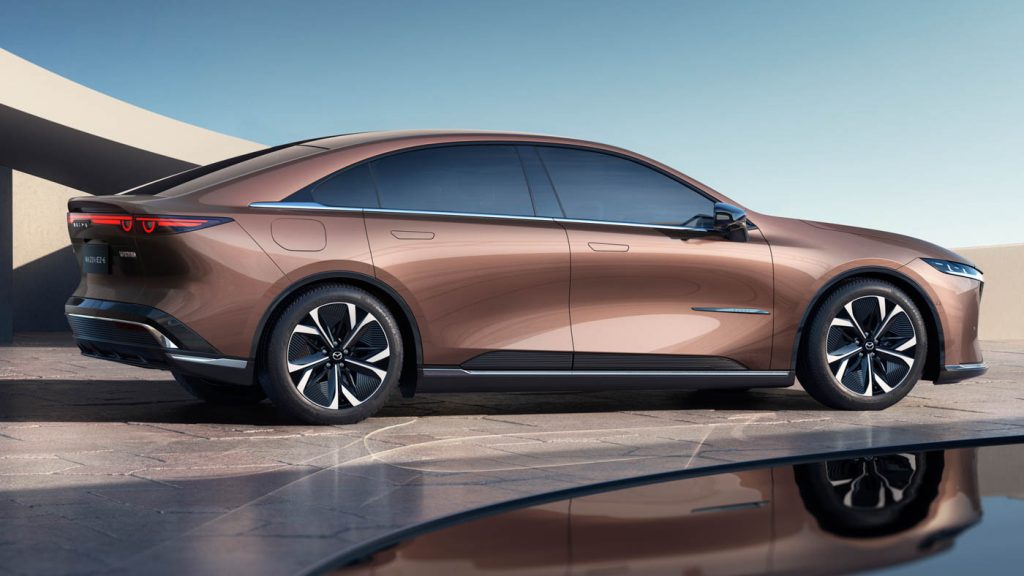
Visually, the Mazda EZ-6 inherits its fundamental shape from the Changan Deepal SL03 (now facelifted and renamed L07). This is a consequence of Mazda leveraging Changan’s EPA platform to expedite its entry into the EV market. Despite this shared foundation, Mazda has successfully applied its design language to the front and rear of the EZ-6. The front features a new and “daring” light design with a closed grille adorned with the Mazda logo. The rear showcases a striking light strip spanning the width of the vehicle while retaining elements of Mazda’s signature round taillight shapes. The EZ-6 adopts a liftback design, offering a practical cargo solution. Measuring 4.92 meters (194 inches) in length, it sits between the Tesla Model 3 and the BMW i5, a factor generally beneficial for aerodynamics. Overall, the exterior design manages to blend the underlying form with a recognizable Mazda aesthetic, a commendable feat given the platform constraints.
Interior and Technology: Borrowed Layout, Enhanced Materials
Inside, the EZ-6’s layout is strongly reminiscent of the pre-facelift Deepal SL03, featuring a 14.6-inch center screen. Unlike the L07, the EZ-6 retains a 10-inch digital instrument cluster, a feature likely to be welcomed by drivers who prefer dedicated driving information. While the basic design echoes its Chinese counterpart, Mazda has elevated the material quality, incorporating micro suede on the doors, dashboard, and seats. Notably, the EZ-6 offers heated, cooled, and massaging front seats with a zero-gravity mode and leg rests, features also found in the Deepal L07, potentially making it one of the most comfortable Mazdas available.
In terms of technology, the EZ-6 benefits from the advancements of its Chinese origins. The infotainment system is powered by a Qualcomm Snapdragon 8155 chipset, ensuring quick response times. The user interface is described as attractive, easy to navigate, and a reskinned version of the Deepal system, and it is actually better than what is currently offered in other Mazda models. The EZ-6 will support Android Auto and Apple CarPlay. Interestingly, Mazda has opted for a complete departure from physical buttons in the cabin, a significant change from their recent design philosophy. Some Tesla-like features, such as a “leaving mode” (similar to dog mode), are also expected. However, the EZ-6’s driver assistance system seems to lag behind its Chinese competitors, offering only lane cruise control, notably less advanced than the Huawei-powered systems available on some Deepal models. A head-up display with augmented reality functions will be available.
Performance and Powertrain: Rear-Wheel Drive with Two Battery Options
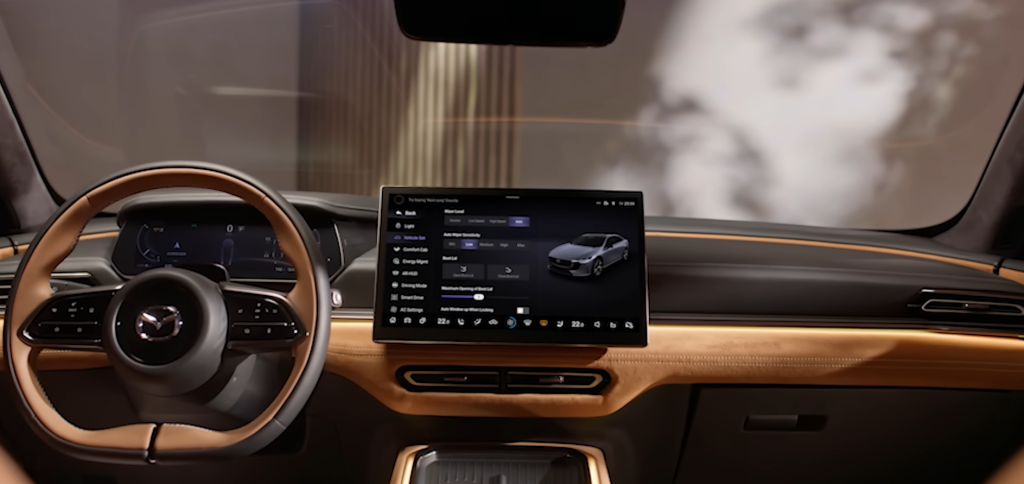
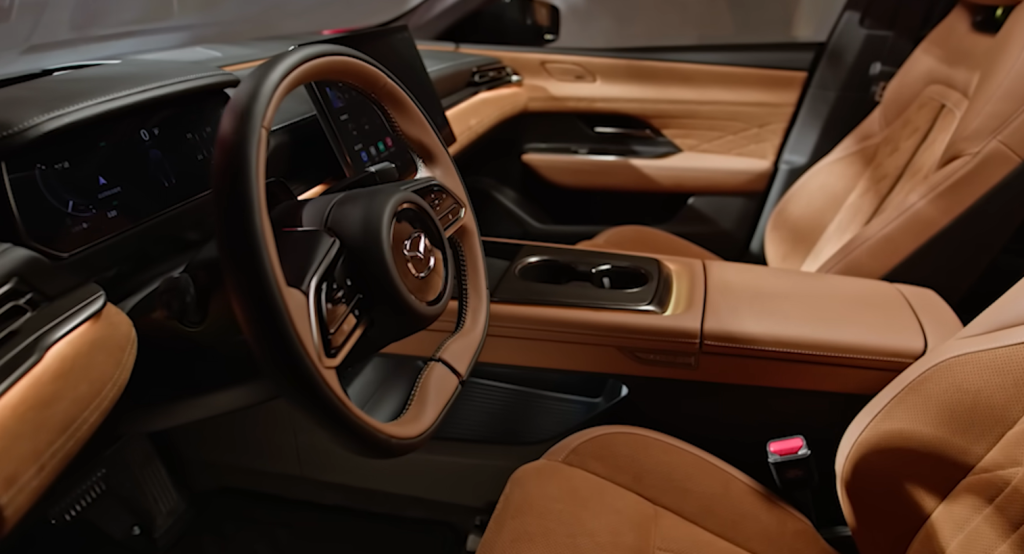
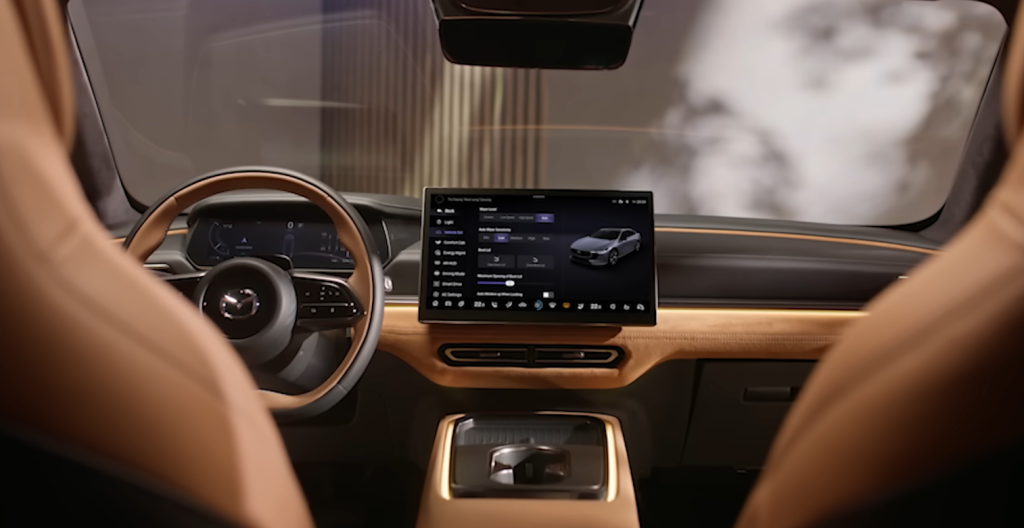
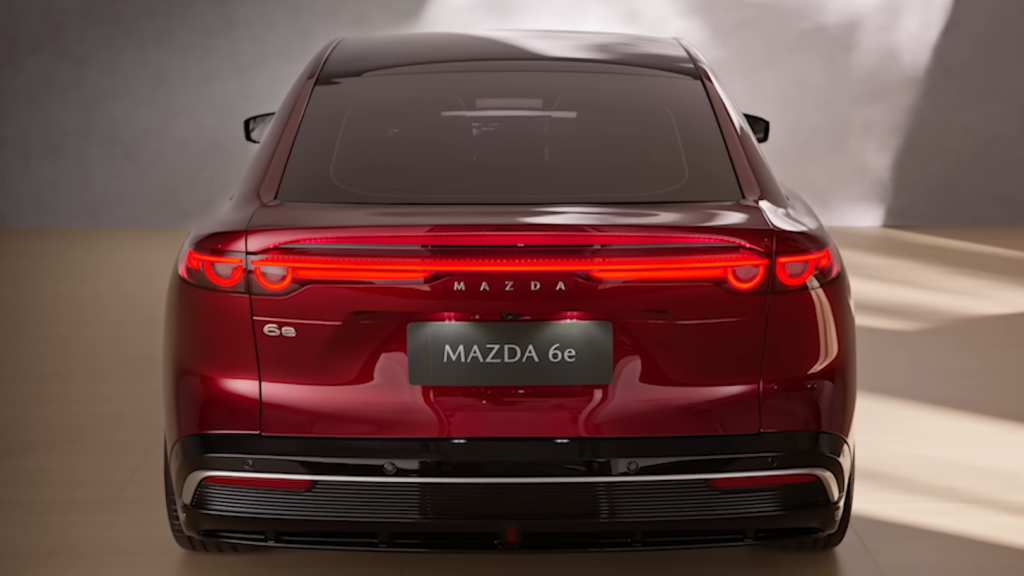
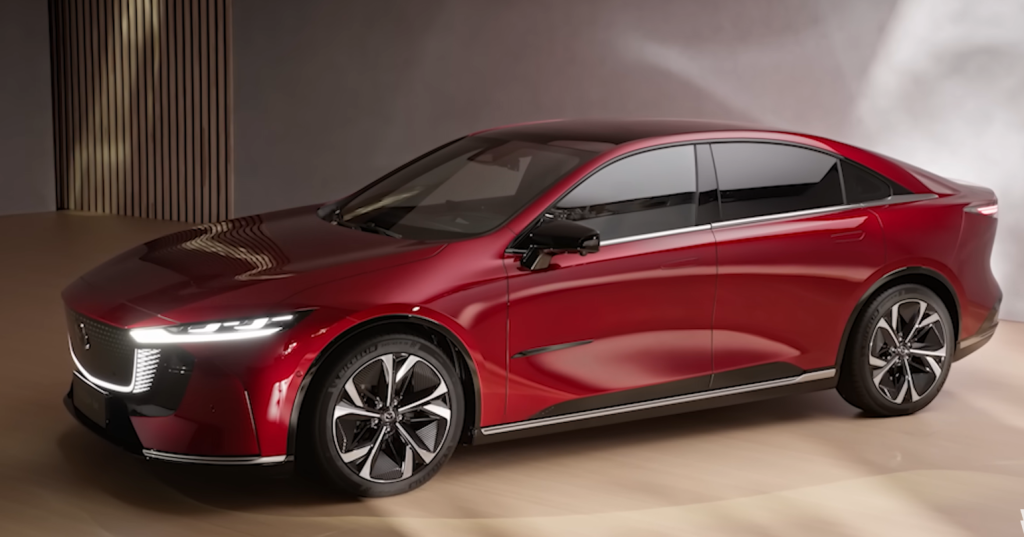
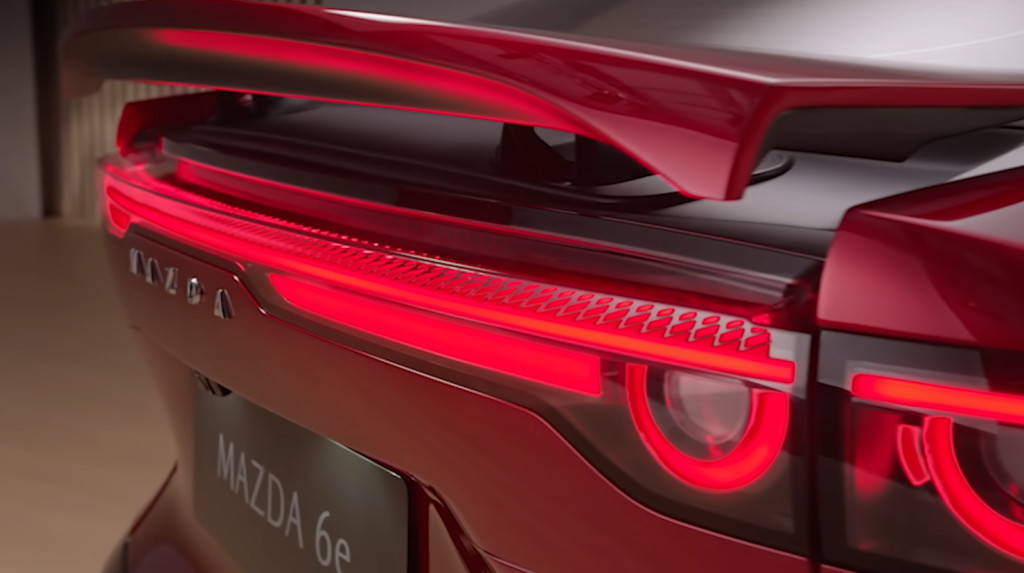

The Mazda EZ-6 is a rear-wheel-drive-only vehicle, aligning with Mazda’s focus on driving engagement. Two battery versions will be available: a 69 kWh gross LFP battery and an 80 kWh gross NMC battery. Mazda has not disclosed the net capacities. The smaller LFP battery enables a slightly quicker 0-100 km/h acceleration time of 7.6 seconds, while the larger NMC battery takes 7.8 seconds. Both versions have a top speed limited to 170 km/h (105 mph). The realistic estimated range for the smaller battery is around 400 kilometers (250 miles), though official CLTC cycle ranges are between 480 to 600 km for the pure electric variants and 130 to 200 km for extended range versions. The charging capabilities differ significantly between the battery types. The 69 kWh LFP battery can charge at a peak of 200 kW DC, allowing for a 10-80% charge in just 22 minutes. The larger 80 kWh NMC battery has a lower peak DC charging rate of 95 kW and takes 45 minutes for the same 10-80% charge. The base version also features 11 kW AC charging.
Driving Dynamics: Mazda’s Touch on a Shared Platform
A crucial question for a Mazda EV is whether it retains the brand’s renowned “Zoom-Zoom” driving feel. While the EZ-6 shares its platform with the Deepal L07, Mazda claims to have implemented its own suspension tuning. Initial impressions suggest that the EZ-6 corners flatter and rides a bit firmer than the L07, but the difference is not described as a “night and day” transformation. However, the EZ-6 does possess the considerable “Zoom-Zoom Factor” to some extent, and the return of a rear-wheel-drive Mazda sedan is a welcome positive for many driving enthusiasts. It appears Mazda has managed to inject some of its driving DNA into the underlying platform, albeit perhaps not to the extent some enthusiasts might hope.
Practicality: Frunk and Liftback Advantage
The EZ-6 offers a practical liftback design, providing easier access to the 479-liter rear cargo compartment, which expands to 1174 liters with the rear seats folded. Additionally, the pure electric version boasts a generous 99-liter frunk (front trunk), larger than that of a Tesla Model 3. The wheelbase of approximately 2.9 meters contributes to decent rear legroom, although headroom is noted to be tight for taller passengers due to the high floor typical of skateboard EV architectures.
Pricing and Market Availability
The Mazda EZ-6 is currently on sale in China. While official pricing details for other markets are yet to be announced, there are indications of its potential European pricing. The entry-level version in Germany, featuring the smaller LFP battery and leatherette upholstery, is expected to be priced below €45,000. This positions it closely to the Tesla Model 3 rear-wheel drive with a small battery, which currently starts at around €41,000 in Germany. The competitive pricing is largely attributed to its production in China through the joint venture with Changan, allowing for lower production and R&D costs. As of this writing, the Mazda EZ-6 is available in the Chinese market. Its availability in other global markets, such as Europe, is anticipated but not yet officially confirmed.
Conclusion
The Mazda EZ-6 represents a strategic move for Mazda to address the burgeoning EV market, particularly in China. By leveraging a Chinese platform and injecting its distinctive design and driving philosophy, Mazda has created a compelling electric sedan. The EZ-6 offers a stylish exterior, an upgraded interior, practical cargo space, and a rear-wheel-drive configuration that hints at Mazda’s traditional driving engagement. While it benefits from the advanced infotainment and battery technology of its Chinese counterpart, its driver assistance features appear less sophisticated. The anticipated competitive pricing, especially for the base LFP battery model, positions the EZ-6 as a viable alternative to established players like the Tesla Model 3. Ultimately, the Mazda EZ-6 demonstrates how foreign manufacturers can adapt to the rapidly evolving Chinese EV landscape and offers a glimpse into Mazda’s electric future in other markets. However, its success will depend on how well it balances its shared origins with the core attributes that Mazda enthusiasts have come to expect.
